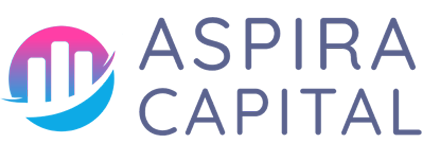Table of Contents
- Understanding Cash Flow
- Financial Planning for Q2: Strategies to Boost Cash Flow
- Review and Analyze Your Expenses
- Accurate Revenue Forecasting
- Enhancing Collections Process
- Diversifying Income Streams
- Building Cash Reserves
- Leveraging Financial Tools
- Monitoring Cash Flow Regularly
- Final Thoughts on Q2 Financial Planning
Understanding Cash Flow
Cash flow is the lifeblood of any business. Understanding how money moves in and out of your organization is essential for making informed financial decisions. Positive cash flow ensures that you can meet your operational expenses, invest in growth, and weather economic uncertainties. Defining key cash flow metrics is critical, such as:
- Operating Cash Flow: This represents the cash generated from regular business operations.
- Free Cash Flow: This is the cash available after accounting for capital expenditures.
- Net Cash Flow: This reflects total cash inflows minus total cash outflows over a certain period.
Financial Planning for Q2: Strategies to Boost Cash Flow
As we transition into Q2, it’s vital to implement Financial Planning for Q2: Strategies to Boost Cash Flow to ensure your business remains on solid financial ground. Below are essential strategies that can guide your financial planning efforts:
Review and Analyze Your Expenses
Before implementing new strategies, review your current expenses to identify where you can cut costs. Conduct a thorough examination of the following:
- Fixed Costs: Analyze rent, utilities, and salaries, and assess if there’s room for negotiation.
- Variable Costs: Look at production or material costs for potential savings.
- Discretionary Spending: Identify non-essential expenses that you can minimize or eliminate altogether.
Creating a detailed expense report can help visualize where your funds are going and assist in identifying saving opportunities.
Accurate Revenue Forecasting
To maintain positive cash flow, it’s essential to forecast revenue accurately. Consider the following:
- Historical Trends: Utilize past sales data to project future revenue.
- Market Analysis: Understand market conditions and consumer trends.
- Sales Pipeline Review: Evaluate the current sales pipeline for expected incoming revenue.
Several resources can assist with revenue forecasting; for example, the Investopedia provides comprehensive guides on effective forecasting methods.
Enhancing Collections Process
A part of maintaining positive cash flow involves streamlining your accounts receivable. Steps you can take include:
- Invoicing Promptly: Ensure invoices are sent immediately after a product is delivered or a service is completed.
- Follow-up on Late Payments: Implement a structured follow-up schedule for unpaid invoices.
- Offer Discounts for Early Payments: Incentivize customers to pay invoices ahead of schedule.
Improving your collections process can significantly affect your cash flow health. Check resources like Accounting Tools for additional insights into collections management.
Diversifying Income Streams
Relying on a single income source can put your cash flow at risk. Consider diversifying by:
- Launching New Products: Introduce complementary products that align with your existing offerings.
- Exploring New Markets: Identify opportunities in different geographical regions or demographics.
- Offering Subscription Services: Establishing subscription models can create consistent revenue streams.
Research shows that businesses with diversified income streams are typically able to withstand economic shifts more effectively. For more information on diversification strategies, visit Harvard Business Review.
Building Cash Reserves
Having cash reserves can be a game-changer during unexpected downturns. Strategies for building these reserves include:
- Setting Savings Goals: Establish clear targets for how much cash you want to have on hand.
- Automating Transfers: Set up automatic transfers to a savings account every month.
- Cutting Unnecessary Costs: Redirect savings from cut costs into reserves.
Building cash reserves not only boosts your cash flow but also provides security and peace of mind. Financial platforms like NerdWallet offer valuable financial management tips.
Leveraging Financial Tools
Modern financial tools can help you streamline operations for better cash flow management. Consider using:
- Accounting Software: Tools like QuickBooks can simplify tracking income and expenses.
- Cash Flow Forecasting Tools: Utilize specialized software to project cash flow scenarios accurately.
- Payment Processing Solutions: Implementing solutions like PayPal or Stripe can speed up collections.
Leveraging technology in your financial planning can enhance your ability to manage cash flow proactively. For insights on the latest financial tools, check out TechCrunch.
Monitoring Cash Flow Regularly
Regular cash flow monitoring is crucial for any business to stay financially healthy. Implement these practices:
- Weekly Cash Flow Reports: Generate detailed cash flow reports to assess your financial status continually.
- Monthly Review Meetings: Schedule team meetings to review cash flow and make necessary adjustments.
- Use KPIs: Track key performance indicators that align with your cash flow goals.
Resources such as Smartsheet can help automate your cash flow monitoring process.
Final Thoughts on Q2 Financial Planning
Applying these comprehensive strategies will enhance your cash flow as you enter Q2. By focusing on expenses, revenue forecasting, collections improvement, income diversification, cash reserves, leveraging financial tools, and consistent cash flow monitoring, you can set your business up for sustainable growth and success.

